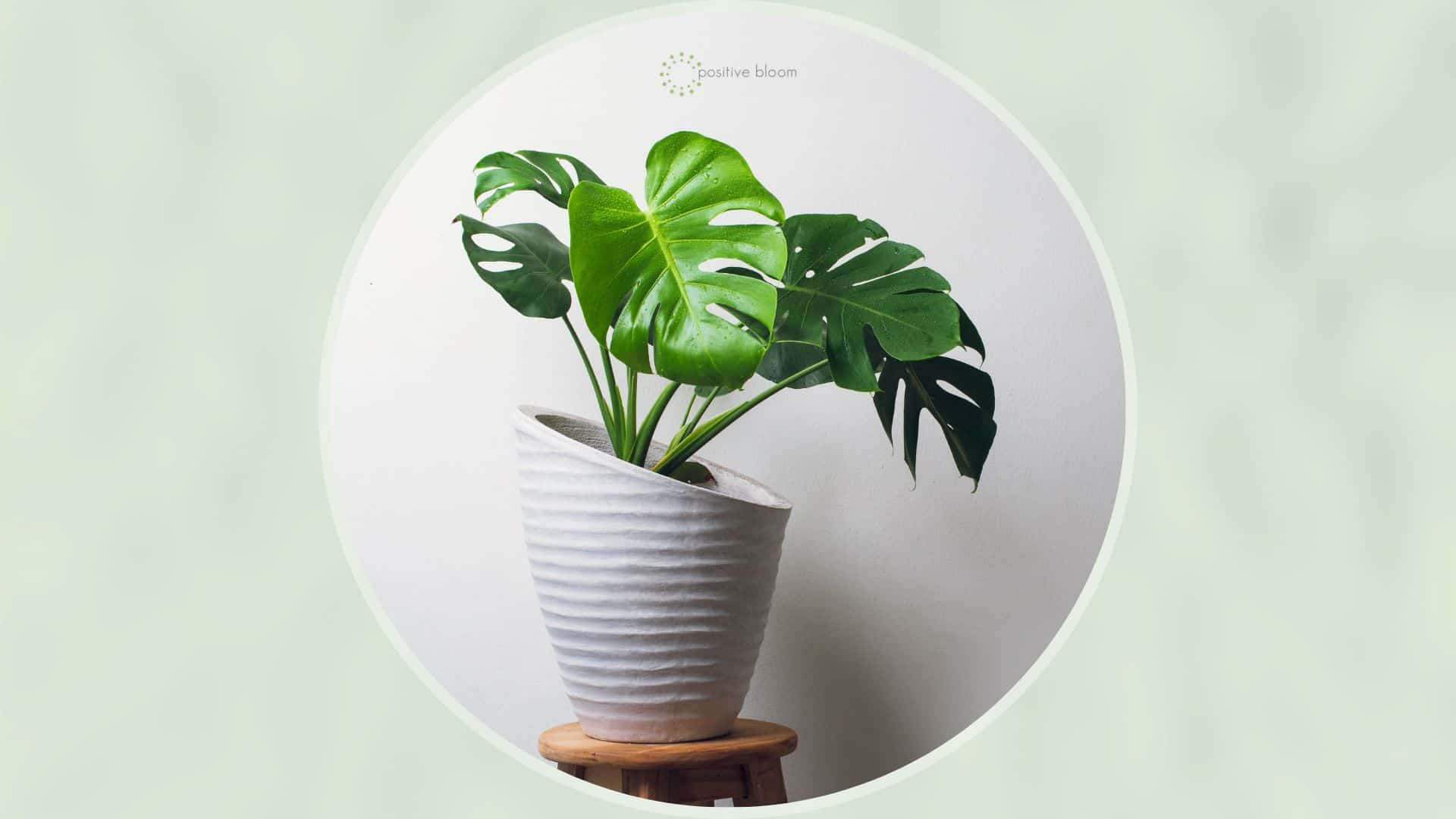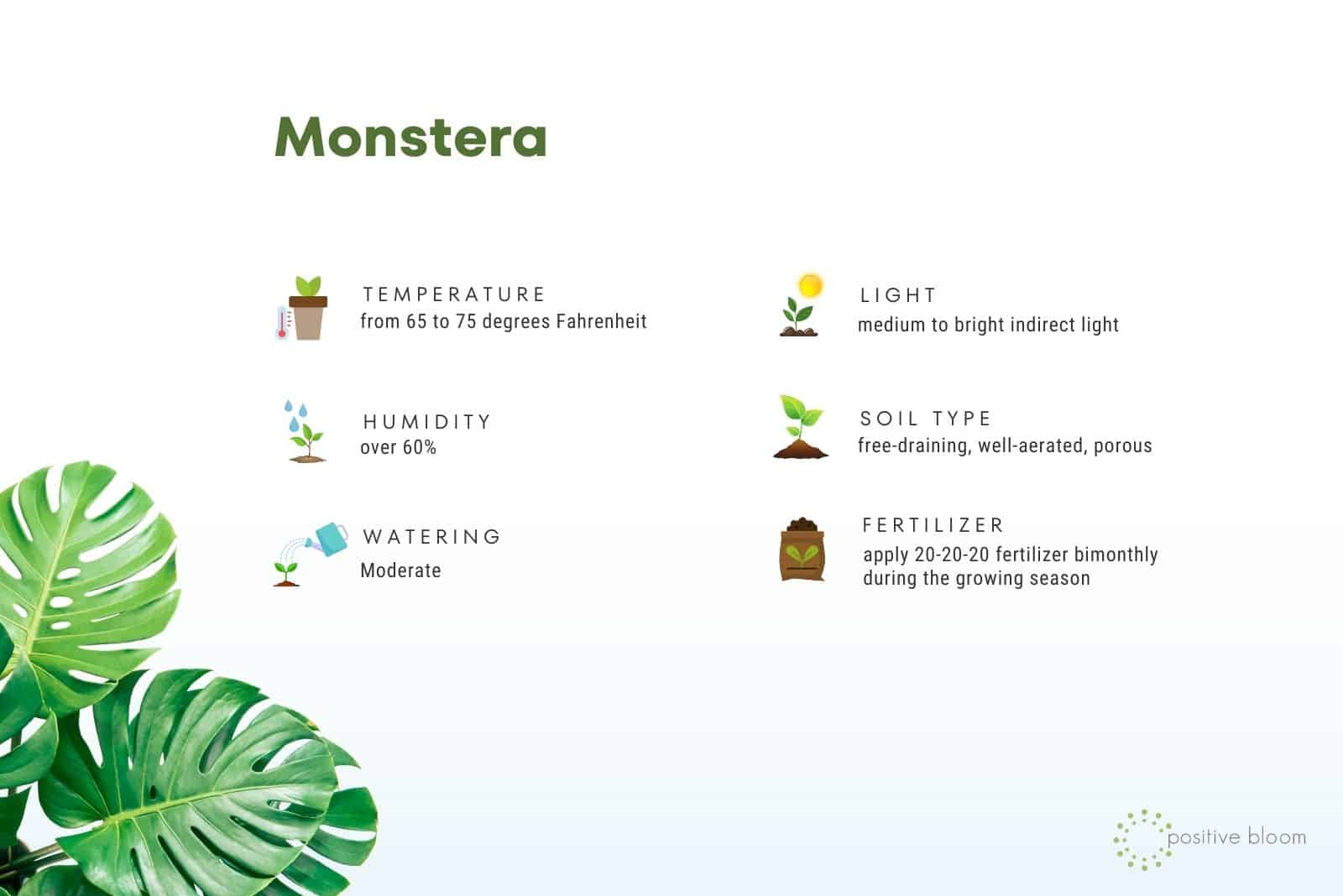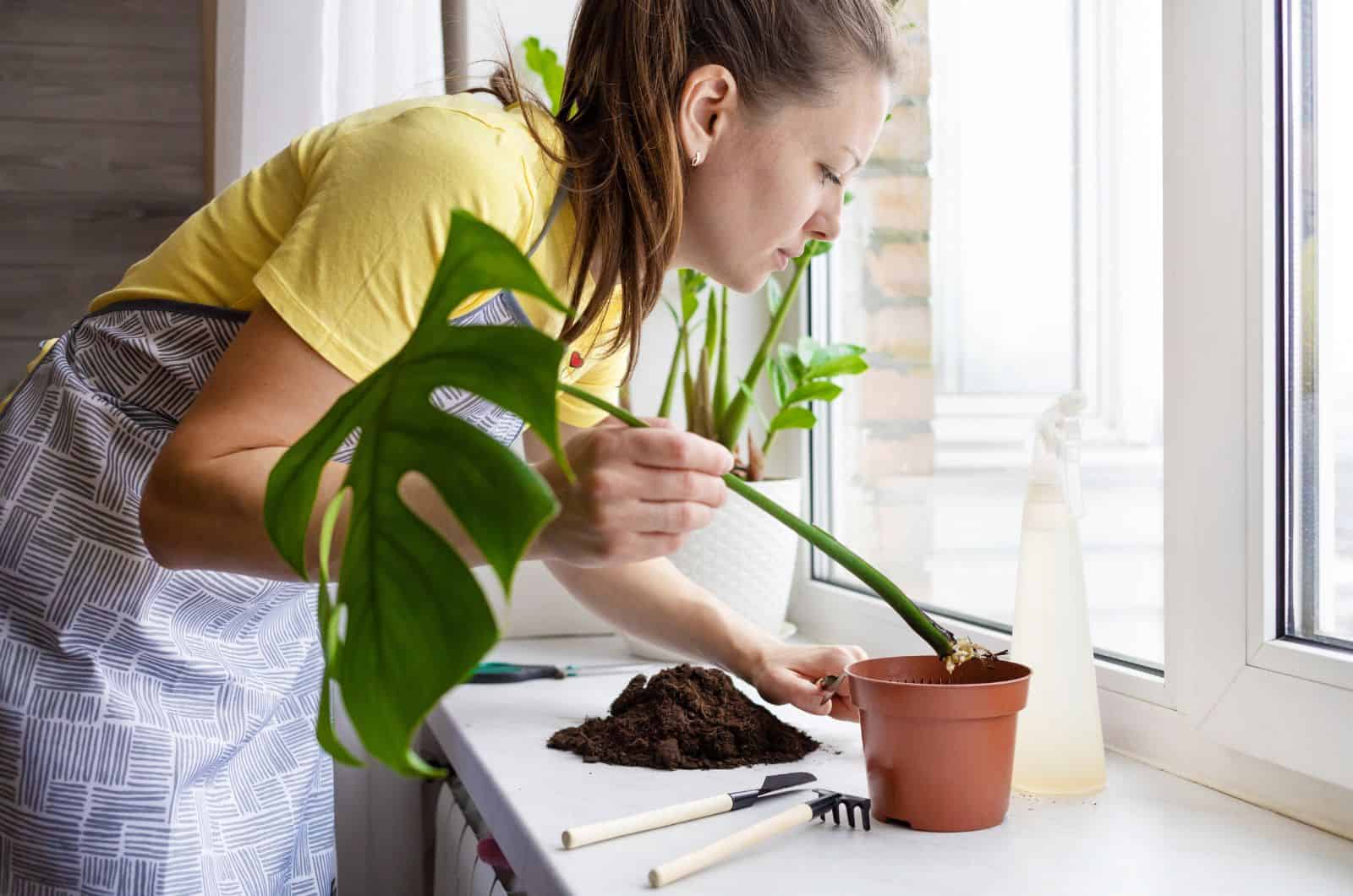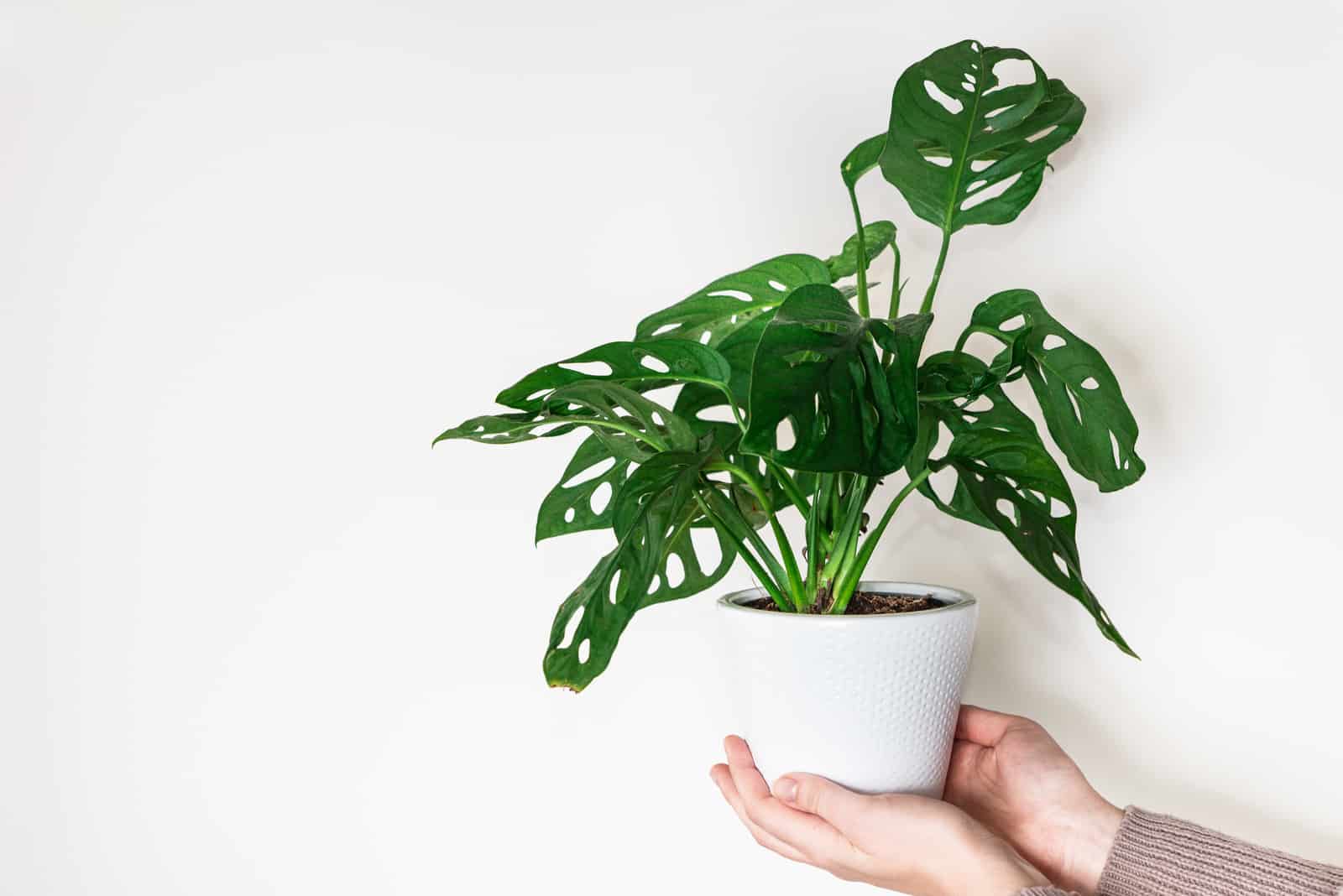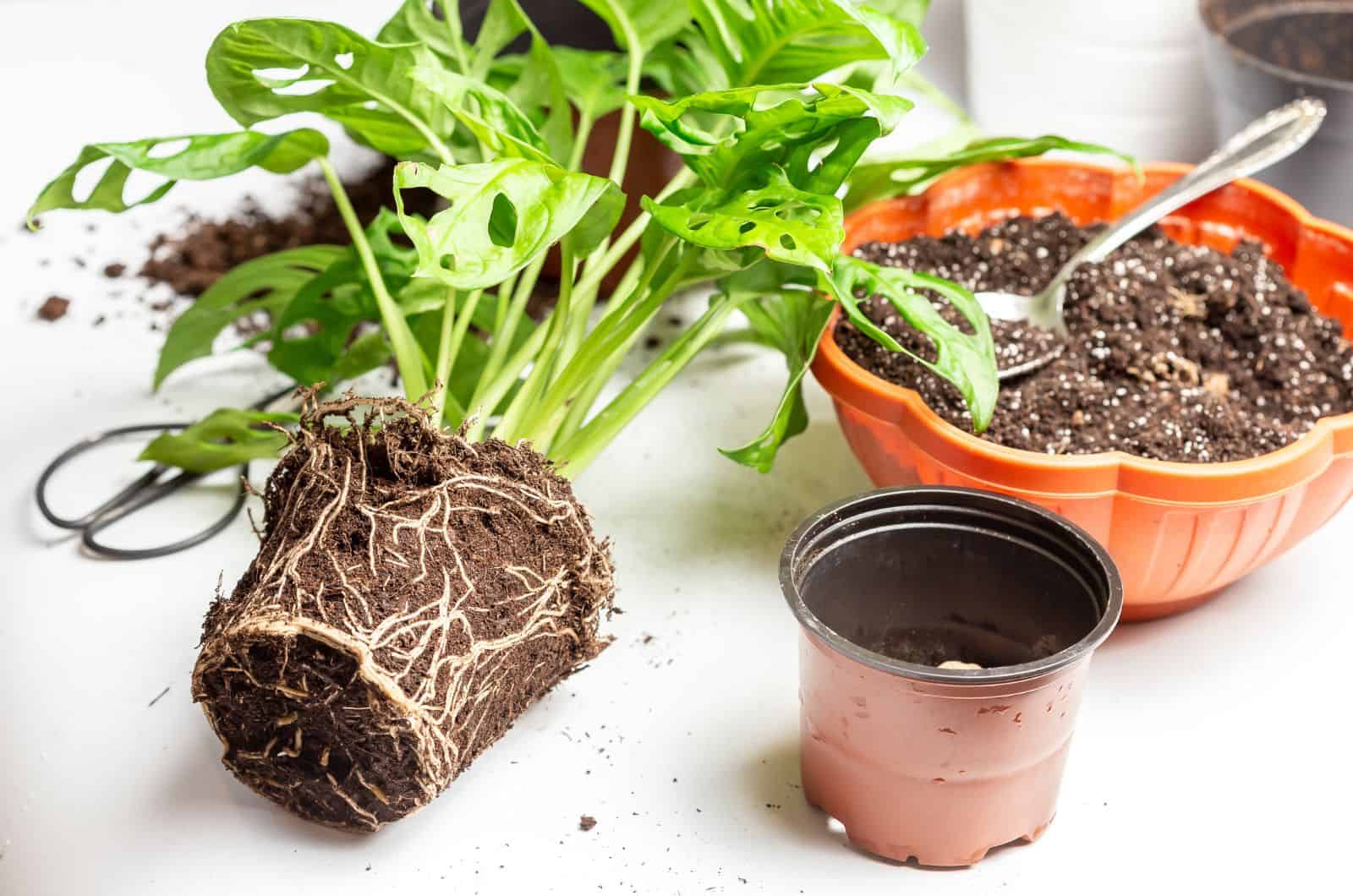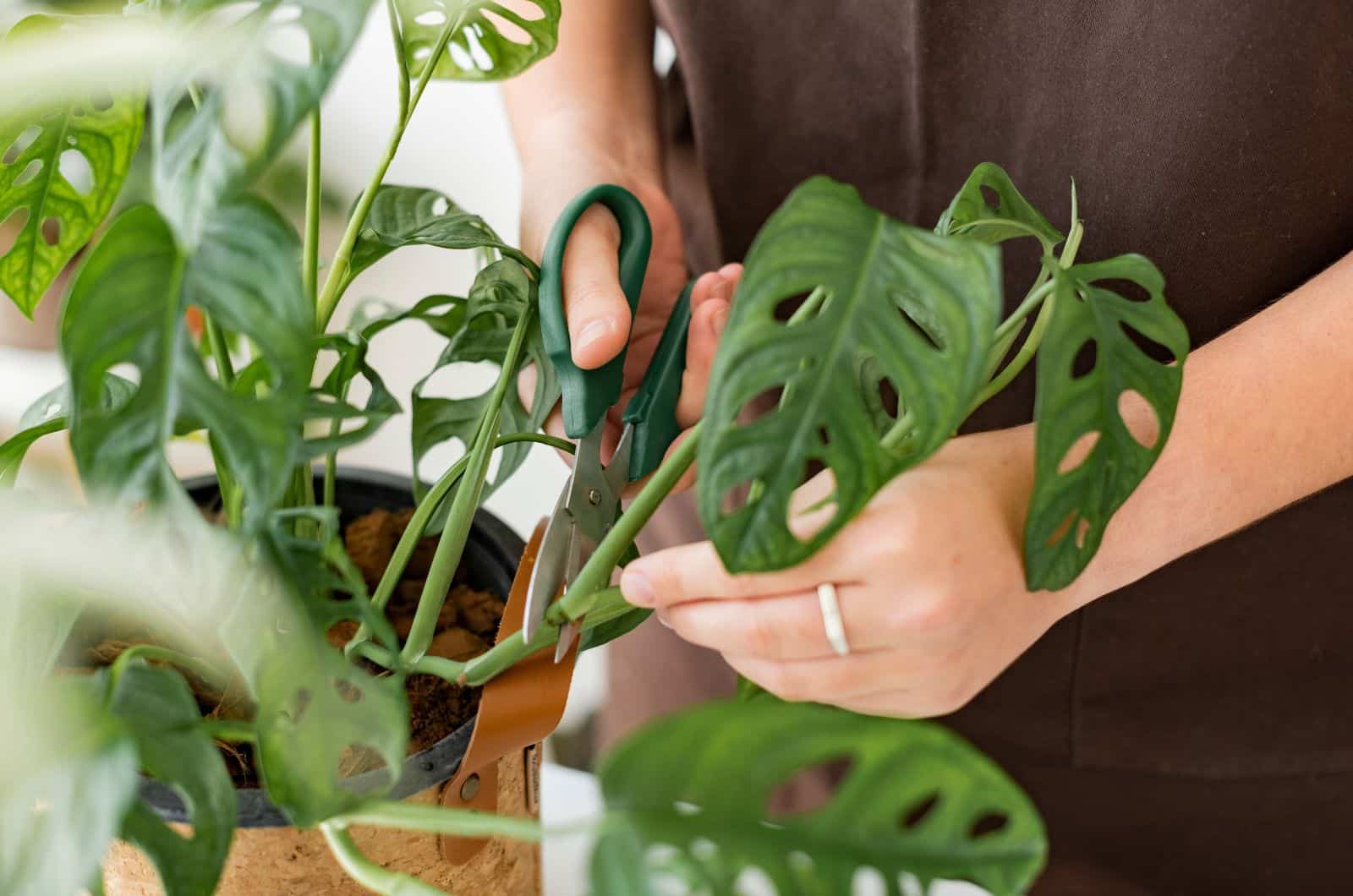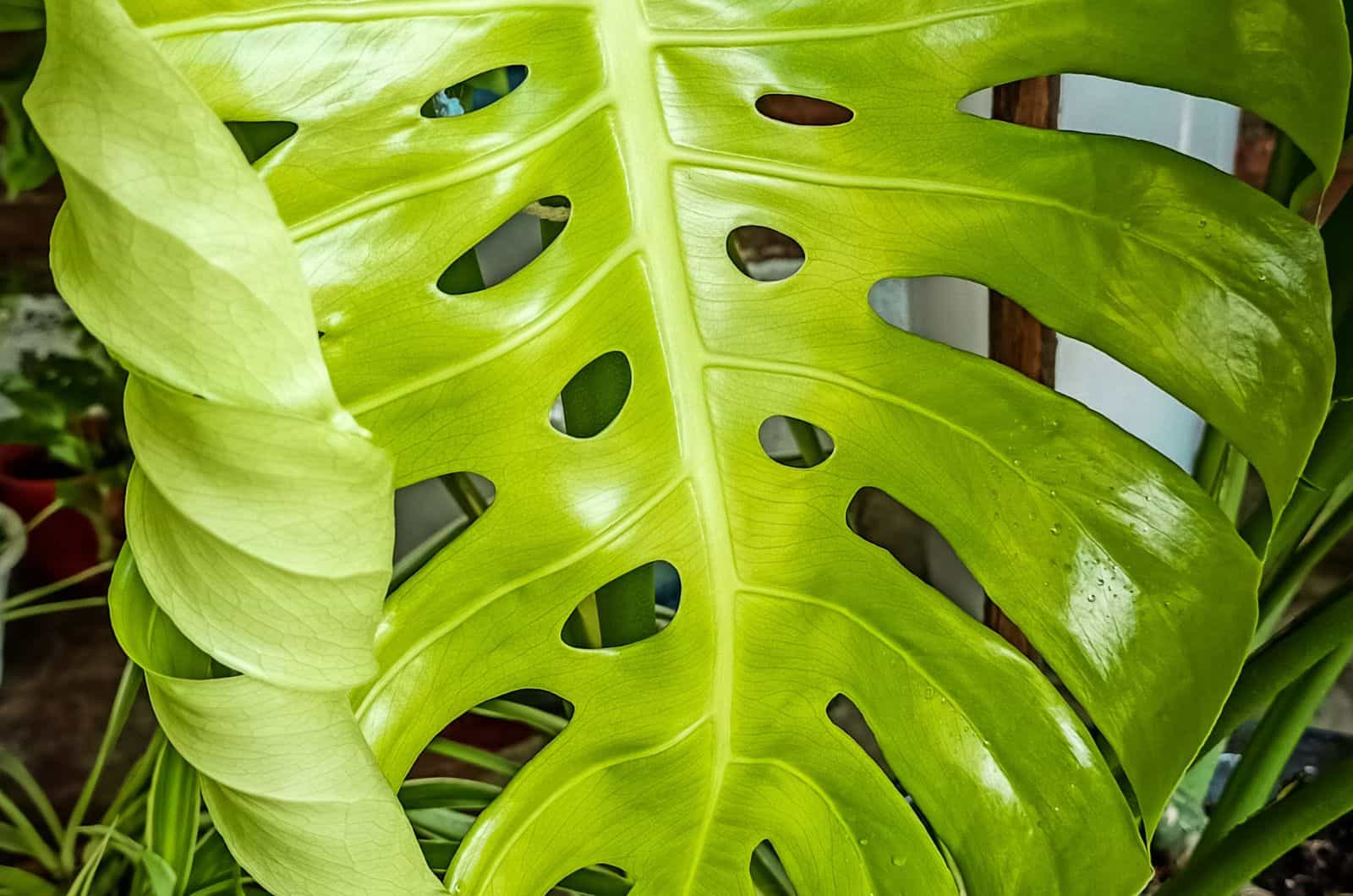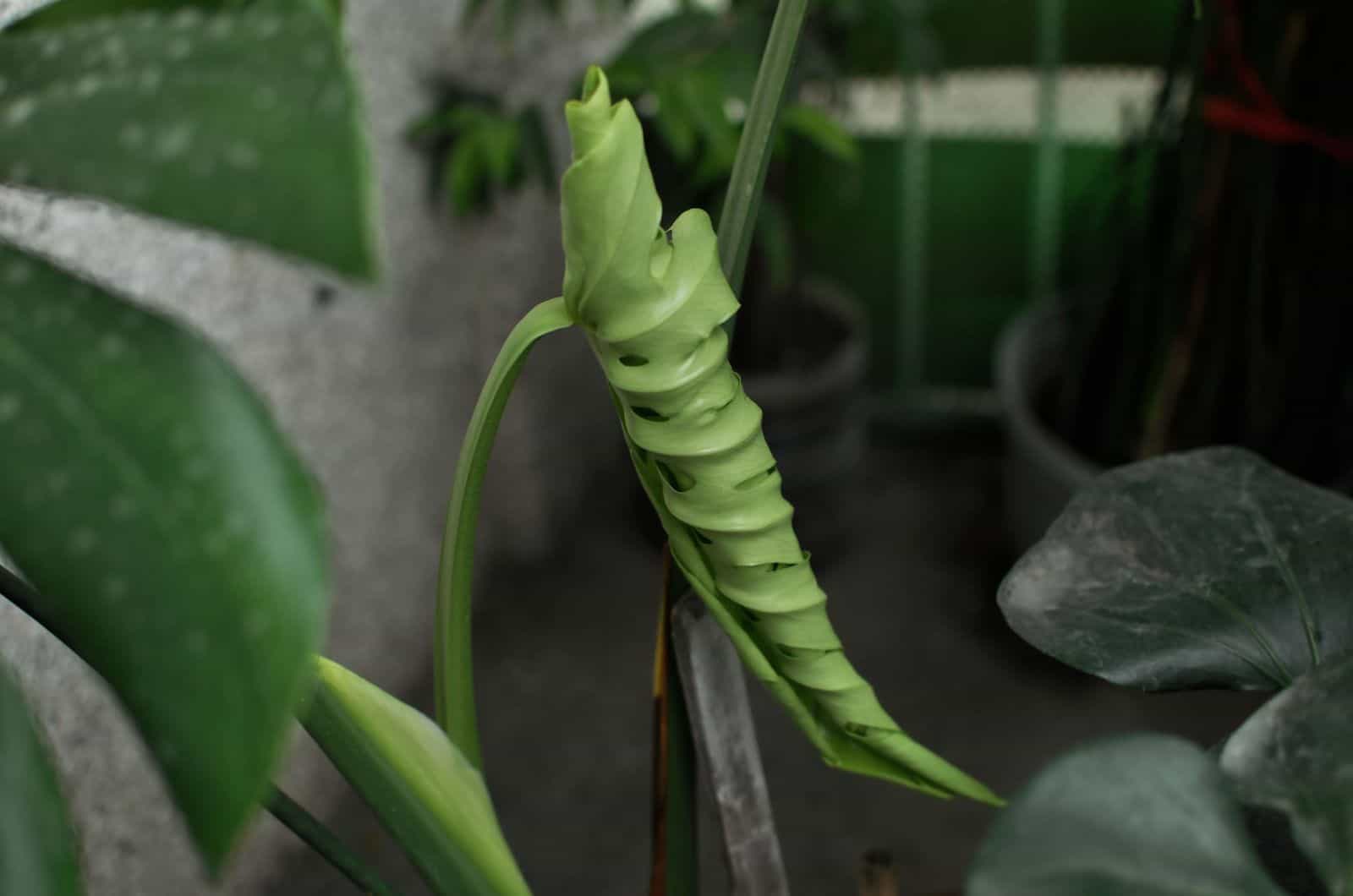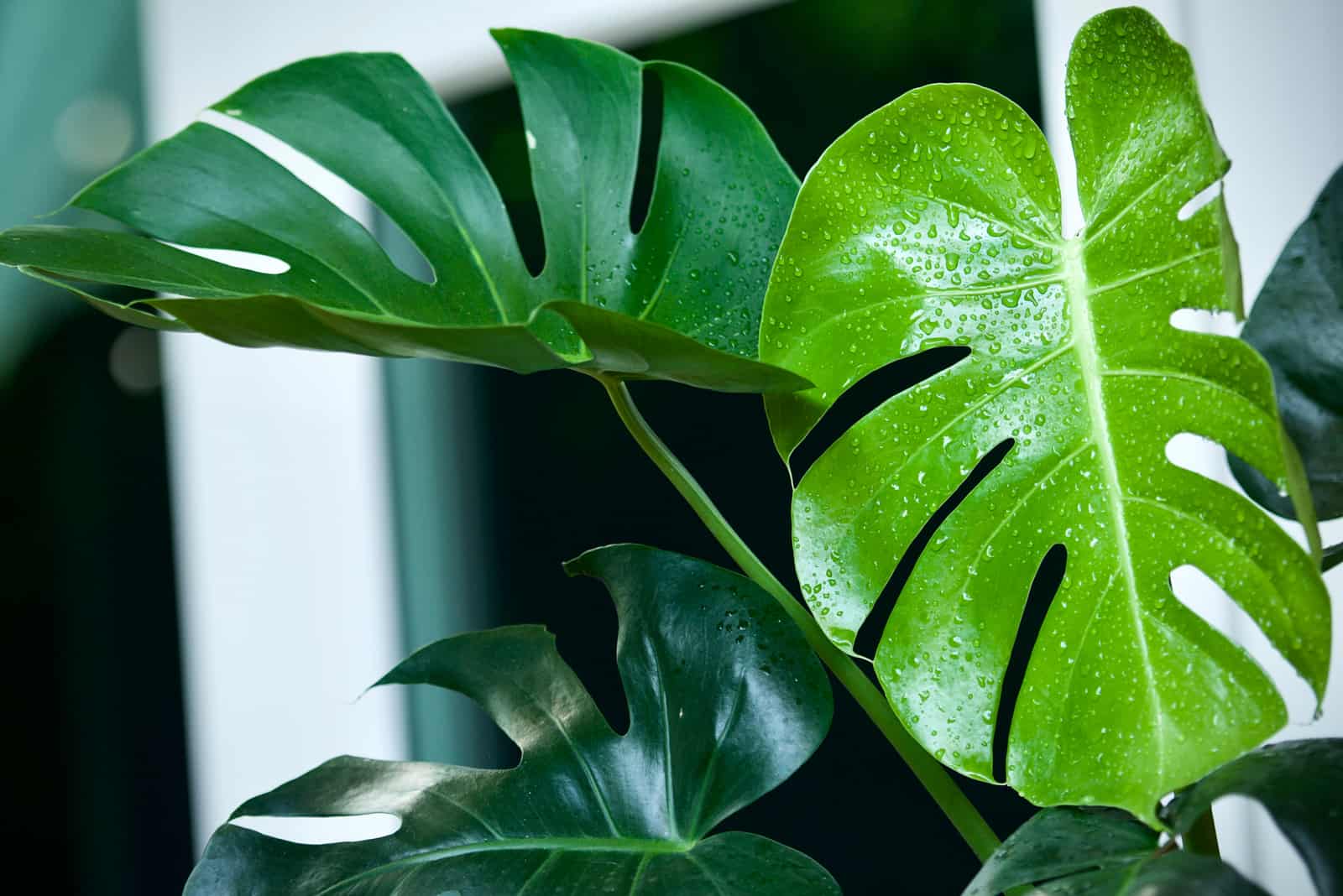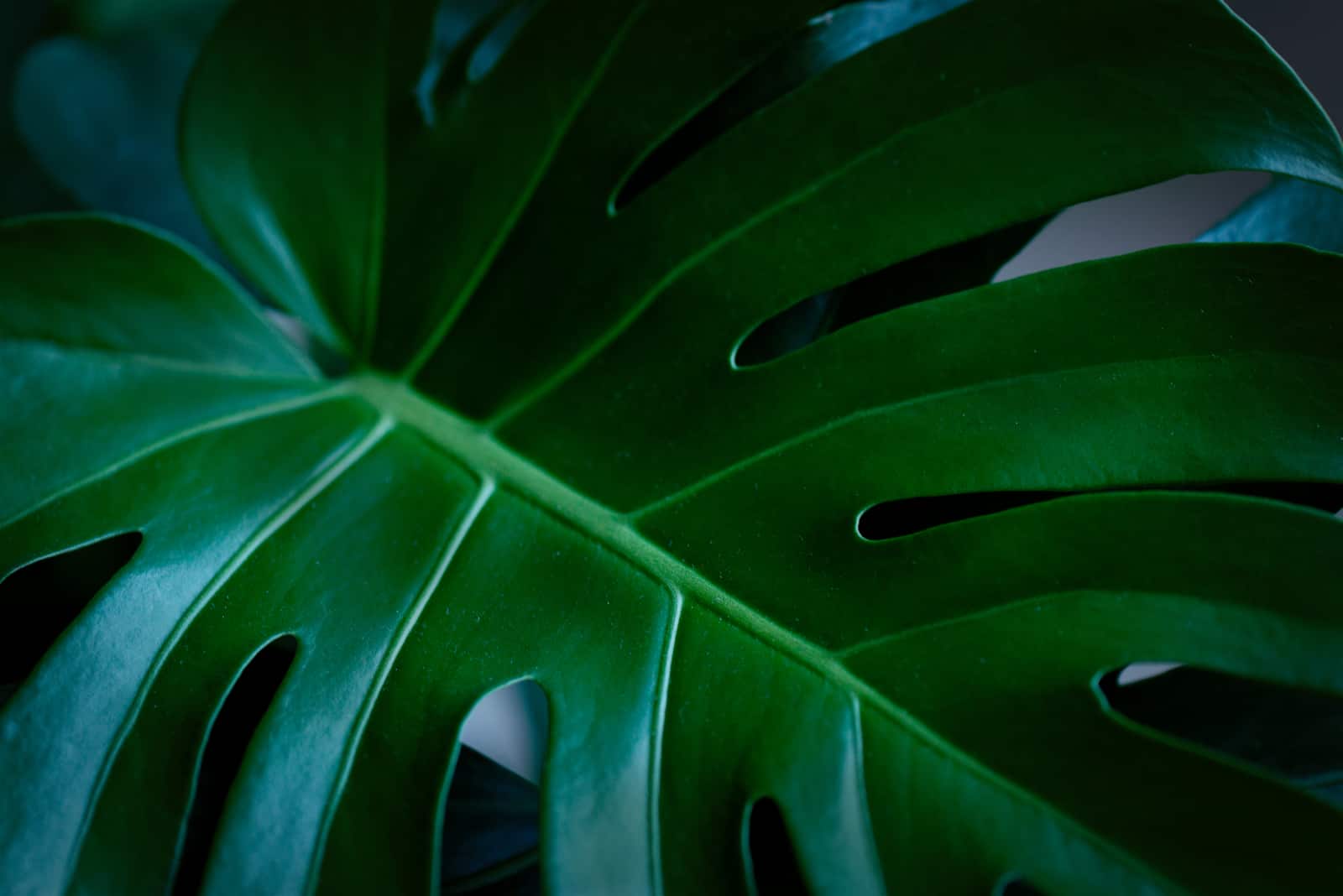When it comes to Monsteras, the question isn’t: Have you ever heard of Monsteras? But rather: How many Monsteras are you growing?
They are definitely in the top 5 low-maintenance plants to grow indoors, and number 1 when it comes to popularity.
If you are a beginner grower and want to grow these plants, or an experienced grower with some doubts, my complete guide to Monstera plant care will definitely help you out.
In this article, I’ll tell you more about all the Swiss cheese plant care requirements and give you some pro care tips, including how to make Monsteras happy and healthy during each growth stage.
Let’s get started!
Monstera Plant Care Guide For Beginners
What do these plants really need to thrive?
Here’s a table with a short overview of the Monstera plant care requirements:
Let’s get started!
How Much Light Does A Monstera Need?
Swiss cheese plants are tropical plants that use taller plant species as structural support in their natural habitat.
This means that Monstera foliage isn’t exposed to direct sunlight, and it should stay that way in indoor cultivation.
Bright indirect light is the best light level for species from the Monstera genus.
Even though these plants tolerate partial shade, I advise using bright indirect sunlight to prevent any light issues.
This is especially important for beginner growers; experimenting with light levels isn’t the best idea when you first start growing plants.
Swiss cheese plants develop fenestrations when given enough light. Low light prevents these plants from forming these holes in their leaves.
On the other hand, too much direct sunlight results in scorching and yellowing of the Monstera leaves.
The best spot you can provide is near a sunny window; though if direct sun reaches the delicate leaves, filter it by placing sheer curtains.
If a spot near a sunny window isn’t available, get some artificial lights.
Humidity For Monstera Houseplants
Humidity requirements for Monstera plants are really high, and it’s often challenging to fulfill them.
Why is that so? Well, the humidity levels in our households typically don’t exceed 30%, and Split-leaf Philodendron plants need over 60%.
This means we need to raise the humidity levels to avoid problems.
There are a few useful methods that can help you increase humidity; before you use any of them, get a hygrometer and measure the humidity level in the room where you intend to keep your Monstera.
Best Ways To Raise Humidity
If you need to raise it a little bit, you can use some DIY methods. Here’s a list of the best ones:
1. Put a humidity tray beneath the container; take a shallow tray, put a few rocks or pebbles in it, and add water.
2. Change the location of your Monstera. Bathrooms and kitchens make excellent places for Monteras because the humidity levels in these rooms are naturally high.
3. Raise humidity by putting your Split-leaf Philodendron plant near other houseplants. Water evaporation from their growing media will slightly raise humidity.
4. Mist your Swiss cheese plant. Pour clean water into a spray bottle and mist your Monstera a few times a week.
If you’re afraid that these methods won’t work, simply install a humidifier. Just like all other electronic devices, humidifiers can be pricey and require maintenance. Still, it is the only 100% sure way to raise humidity.
Perfect Temperature For The Swiss Cheese Plant
These plants are native to tropical regions, so they are accustomed to warmer temperatures. As long as the temperatures are anywhere between 65 and 75 degrees Fahrenheit, your lovely Split-leaf Philo plant will grow perfectly.
Don’t worry if the temperatures are slightly higher or lower, as Split-leaf Philodendron plants are highly adaptable.
Temperatures below 50 degrees Fahrenheit may cause severe damage to this climbing evergreen.
Monsteras can be successfully cultivated outdoors in USDA hardiness zones 10-12.
Remember that warm temperatures change the watering needs of houseplants, so pay attention to the soil moisture content if temperatures are higher.
Cold drafts and sudden temperature changes may cause severe problems, so avoid spots near heating or cooling devices, as well as drafty windows.
What Is The Best Soil For A Monstera Plant?
The best soil for Monstera plants is well-aerated, free-draining, and rich in essential nutrients.
Although these species are indigenous to the tropics, the hot, humid atmosphere there causes the soil to dry up and rehydrate very quickly.
By adding perlite, pumice, or similar well-draining materials, you’ll prevent excess water accumulating in the growing medium.
This is essential because Monstera roots are pretty delicate and can be severely damaged by standing water in the soil.
Since Swiss cheese plants need continual soil moisture, you should also include some materials that retain moisture, like sphagnum moss.
Regarding soil pH, keep it in a range from 5.5 to 7.0.
Finally, the soil should be fertile because Monsteras need a lot of nutrients to produce their stunning leaves.
Before you plant your Monstera, mix a handful of compost into the growing medium.
How Often Should I Water My Monstera?
Watering is definitely the most challenging aspect of plant care. Experienced plant growers are well aware of the fact that overwatering and underwatering can be lethal.
If you are a novice, pay close attention to the watering schedule, as the overall health of your Monstera mainly depends on it.
During the initial Monstera growth stages, you may need to water more frequently because new plants need a lot of moisture to thrive.
A rule of thumb is to water Monsteras when their growing medium dries out an inch or two below the soil line. There are a few useful methods for checking moisture in the growing medium.
For instance, you can put your finger in the potting soil, and if it feels wet, delay irrigation. If the topsoil is light brown, your Monstera could use some water.
Therefore, constantly moist soil is your first goal. If you’re unsure about the moisture content in the growing medium, consider investing in a moisture meter.
Remember that waterlogged potting soil attracts harmful fungi that may kill roots.
Water more frequently during the growing season (spring and summer) and cut back on irrigating your Monsteras during the winter months as they won’t display new growth.
How And When To Fertilize Monsteras
As previously stated, these plants from the Araceae family flourish in fertile soil types, so they’ll benefit from regular feeding.
I advise using fertilizers with a high nitrogen content because this nutrient is essential for the development of lush and vibrant leaves.
Fertilizers with a 20 20 20 NPK ratio have shown to be the best option for Swiss cheese plants, but you need to dilute it unless you want to burn the root system.
Apply fertilizer bimonthly during the growing season to promote new growth.
If you choose to feed your Monstera with organic plant food, apply it monthly; again, only during the growing season.
Overfeeding is extremely dangerous for Monsteras as it can generate chemical buildup in the soil, which would make it harder for the roots to absorb nutrients.
Pruning And Staking Monstera Deliciosa Plants
Your lovely Monstera will definitely benefit from occasional pruning. If the aerial roots are too long and affect the overall appearance of your Monstera, you can prune them instead of tucking them back into the container.
You can also trim older leaves as they’ll most likely turn yellow or brown, but that shouldn’t worry you as your plant is getting older and needs the energy to produce new growth.
Of course, pruning will help you achieve a specific shape, but make sure your pruning shears (or any other cutting tools) are sanitized and sharp.
Staking
Remember that plants from the Monstera genus have a climbing growth habit, so you need to ensure they have some support.
Luckily, staking Monsteras isn’t a hard task and you have many options when it comes to the type of structural support to use.
The majority of Monstera species, including the breathtaking Monstera adansonii, look incredible when attached to a trellis.
Another great choice when it comes to support are moss poles. They may be pretty tricky to install, and you need to keep them moist, so they are probably more suitable for more experienced growers.
Tips For Repotting Monsteras
Split-leaf Philodendron plants grow pretty fast under perfect conditions. There are a few things that can help you detect if your Monstera needs repotting.
Take a look at the bottom of the pot; if you notice the roots are coming out of the drainage holes, it’s time to repot your Monstera.
Your Monstera may display poor growth and the leaves may start yellowing if the roots don’t have enough space to spread.
The growing medium may also get overly compact and lose its ability to absorb water. In this scenario, your Monstera will begin to wilt as a result of dehydration.
Always transplant your plants at the beginning of the growing season, i.e., early spring. It will give your Monstera ample time to adjust to its new surroundings.
How To Repot Monstera Plant
Here’s a list of all the equipment you’ll need to repot these lovely plants:
• Fresh growing medium (porous, fertile, free draining)
• 2-inch larger pot (the pot for your Monstera should be porous and have drainage holes in the bottom)
• A pair of sanitized pruners
Here are the steps:
1. Remove your green friend from its container. The best idea would be to allow the growing substrate to dry out entirely before transplantation. Turn your container over and let your Swiss cheese plant slide out.
Note: You might need assistance from a friend if you repot a larger Monstera species.
2. Examine the root system: Healthy roots are firm and typically greyish-white in color, as opposed to diseased roots, which are mushy and black or brown.
Cut off all damaged and discolored roots using a sanitized pair of pruners.
3. Place your Swiss cheese plant in a new pot. If it is attached to a stake or pole, you need to transfer both the plant and the supporting structure.
Fill the container halfway with growing substrate and put your Monstera and its pole in it. Add more substrate until the root system is no longer visible.
4. Irrigate your repotted Monstera: Give your Monstera a good soak, let it drain well, and place it where it can get enough bright indirect light.
How To Propagate Monsteras
Don’t miss the chance the propagate your Monstera! There are a couple of methods you can use for propagation, such as stem cuttings and air-layering.
Let’s look closer at both ways!
Stem Cutting Propagation Method
Here are the steps:
1. You need a healthy stem cutting that’s at least 6 inches long and has a node, aerial root, and a few leaves attached. Make a clean incision and use sharp cutting tools to prevent damage.
2. To hasten the formation of the cell roots, submerge the Monstera stem cutting in a rooting hormone.
3. You can root your Monstera in water or a soil mix. If rooting in water, make sure the leaves are above the water line and change the water every 3 days.
If rooting in potting soil, keep it moist all the time and make sure the leaves are above the soil surface.
4. Put the cutting in a room with a temperature range of 70 to 77 degrees Fahrenheit. The cutting needs a lot of bright indirect light to develop new roots.
After a few months, or when the roots are formed, transplant the cuttings in a pot.
Air Layering Method
Another beginner-friendly Monstera propagation method is air layering.
You need to prepare sphagnum moss, a plastic bag, rooting hormone, twist ties, and a sharp and sanitized knife.
Here are the steps:
1. Presoak the sphagnum moss; leave it in water for about 30 minutes and then squeeze it well to remove the excess water.
2. Make an incision beneath the Swiss cheese plant node with a sharp, clean knife.
3. Brush the cut end with rooting powder, or dip it if you have a liquid version.
4. Grab the moss with your hands and gently wrap it around the node.
5. Cover the sphagnum moss with a plastic bag and secure it using twist ties.
Mist the sphagnum moss regularly and remove the plastic bag from time to time. As soon as you notice new roots, remove the node using a sharp and clean knife.
Plant the rooted Monstera cutting in a suitable growing substrate and ensure it gets enough light.
Troubleshooting
It may be pretty disheartening for a plant parent to see their lovely plants suffer. Unfortunately, it isn’t uncommon and even if the plants are hardy, they can suffer from pests and diseases.
Additionally, houseplants may display changes in appearance if growing in incorrect conditions.
The problems with Monsteras include pests, diseases, discoloration, and deformation.
Let’s get into details!
Pests
Aphids, mealybugs, scales, and spider mites are all common Monstera pests. These pests affect all houseplants, so if one plant has a pest infestation, it will quickly spread to the entire collection.
How can you tell if your Monstera has pest issues?
Let’s look at the signs of the most common pests:
1. Aphids: If you notice your Monstera leaves are curling and wilting, inspect them and if there’s a sticky substance on the surface, you might be dealing with aphids.
2. Mealybugs: These tiny white insects feed on the plant leaves and suck out all the food. They typically infest the Monstera leaf undersides and leave a big mess. The foliage turns yellow and the plant displays poor growth due to damage.
3. Scale: They have a distinct brown, circular form. Sometimes, the waxy covering on these creatures makes them look like white cotton tufts clinging to the plant’s foliage.
4. Spider mites: Similarly to mealybugs, these arachnids are often seen on the Monstera leaf undersides. After they’re done with lunch, i.e., when they suck out the sap of the plant, they leave a silky web.
How To Remove Pests
Monsteras can die if they suffer from a severe infestation, so you need to treat the problem as soon as you spot it.
Insecticidal soap solutions are a great way of treating annoying mealybugs.
To eliminate scales, Monstera plants are frequently sprayed with water. In the case of severe infestations, insecticidal soap can come in handy.
The most commonly used remedies for treating spider mites include neem oil and rubbing alcohol.
You can also use these solutions to eliminate aphids from your Monsteras.
Diseases
Your Split-leaf Philodendron is sensitive to different fungal diseases in addition to pest infestations.
Overwatering is a major contributor to the deadly fungal condition known as root rot. If your Monstera has root rot, you need to do everything to remove it because it can be fatal.
Cutting off the diseased roots and applying fungicide to the root system is one of the best ways to treat this problem.
Other diseases include Bacterial leaf spot and Anthracnose. If your plant has lesions followed by yellowing leaves, check for Bacterial leaf spot.
If the lesions are brown and the leaves start falling off, check for Anthracnose disease.
Before you start treating these diseases, isolate your plant because the infection can spread quickly. Copper fungicide is frequently used to treat these infections, but neem oil is a good option too.
Deformation
If your Monstera starts wilting, you need to inspect it closely because there are many possible causes.
The most common cause is dehydration. If you have underwatered your Monstera, it’ll most likely start wilting and display other changes such as crispy or curly leaves.
If lack of water caused this issue, then water your Monstera more frequently until it shows signs of improvement.
If the topsoil is mushy and smells bad, your Swiss cheese plant might have root rot. It wilts because the roots are damaged and can’t send water to the foliage.
Too much direct light can also cause wilting, and it comes with yellow and scorched leaves.
Discoloration
Here are the most common problems with Monstera foliage:
1. Leaves turning yellow: Incorrect light levels, dehydration, overwatering, and lack of nutrients can cause yellowing. Inspect your Monstera closely and see which other signs it shows.
Check the soil moisture content and sun exposure, and try to remember the last time you fertilized your Monstera.
2. Leaves turning brown: Dehydration, waterlogged soil, and low humidity are the most common causes of brown leaves.
Again, measure the moisture level in the growing medium and check the humidity.
3. Leaves turning black: If you overfed your Monstera or forgot to feed it at all, the leaves may turn black. Other causes of blackening include too much direct sunlight and diseases such as Bacterial leaf spot.
Best Monstera Varieties To Grow As Indoor Plants
We’ve seen the perfect conditions for Monsteras. There are numerous species from this genus, and it’s hard to choose the prettiest one.
Before I show you some of the best species; here are some things all species have in common:
• These plants produce blossoms and edible fruits in their natural environment. Unfortunately, this rarely happens in an indoor setting.
• All plants from this genus are poisonous; the foliage contains toxic substances that may cause health issues. Find a spot for your Split-leaf Philodendrons where small children or pets can’t reach them.
• The majority of specimens produce fenestrations; the Monstera standleyana is an exception.
Here are my top 4 varieties for indoor cultivation:
Monstera varieties
1. Monstera deliciosa: This is one of the most popular houseplants in the world. If you pay a lot of attention to Monstera deliciosa care, it’ll reward you with deep green, fenestrated foliage.
2. Monstera adansonii: This climbing plant is often referred to as the Five holes plant because of its fenestrations. It typically doesn’t exceed 8 feet tall when grown as an indoor plant.
3. Monstera dubia: This Monstera has a shingling growth habit and can reach 3 feet tall when grown as a houseplant, making it suitable for smaller spaces.
4. Monstera obliqua: One of the rarest Monsteras, the Monstera obliqua has one special feature; its leaves have more fenestrations than tissue.
Wrapping Up
Monsteras are an excellent choice for beginners! They look breathtaking and are really easy to maintain.
Additionally, you can quickly get more Monsteras using a few propagation methods.
We’ve discussed all the Monstera plant care requirements, and if you follow our advice your Monstera will flourish and the leaves will be prettier than ever!
Until next time!

